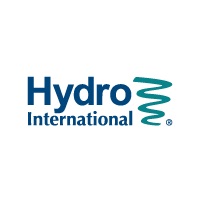UK Guidelines & Regulations for Highways

For engineers and designers, this document provides an overview of available guidelines and regulations for the design and construction of highways in the UK.
Design Manual for Roads & Bridges (DMRB)
The Design Manual for Roads & Bridges (DMRB - www.standardsforhighways.co.uk) is a suite of documents containing requirements and advice relating to works on the SRN.
Whilst the DMRB documents are not statutory or regulatory documents, nor necessarily comprehensive in the sense that they may not cover every point in exhaustive detail, they provide a solid framework under which competent and suitably qualified practitioners can operate. They also still provide for a degree of flexibility to allow designers to make judgements as opposed to set out prescriptive measures.
The DMRB is closely linked to the Manual of Contract Documents for Highway Works (MCHW), which sets out the basis against which highways should be constructed. Incorporating the Specification for Highways Works (SHW), Notes for Guidance on the Specification for Highways Works (NfGSHW), the Highways Construction Details (HCD) and Bills of Quantities for Highways Works, the MCHW provides the primary documents required for the preparation of contracts for works on the SRN in one place and supports quality management systems.
It has the status of Standards and any variations need to be specifically agreed with the Overseeing Organisation through a Departure from Standard.
Scotland
For Scotland, responsibilities around flooding are shared between SEPA, Local authorities, Scottish Water, Scottish Government and the Met Office, and surface water flooding is now seen as the key future risk, with highways of course being a part of that risk, and adaptability is again a key theme, as is the need to explore and develop more sustainable schemes around highway construction and drainage. The Flood Risk Management (Scotland) 2009 planning guidance sets the scene for future direction and SuDS for Roads provides specific guidance.
Wales
For Wales, Local Flood Risk Management Strategies guidance is available, Wales Flood Response Framework, designed to provide a single point of reference for emergency responders promote signposting and warning systems and improve the level of awareness of wider flood risk issues.
Accurate forecasting of weather systems and the associated flood risk is also seen a major requirement. Sustainable Drainage Systems Standards for Wales can be applied to developments which include road drainage, but hey are not intended to be applied to the trunk road network managed by the Welsh Government. Equivalent provision for SuDS for these roads is contained in Volume 4 of the DMRB.
National guidelines such as the Manual for Streets in England & Wales or Designing Streets in Scotland are also available, which are then supplemented by Local Authority standards and guidelines. At this level, the context for highways starts to widen to include placemaking and enabling safe access for all road users, including pedestrians and cyclists.
Whilst the DMRB documents are not statutory or regulatory documents they provide a solid framework under which competent and suitably qualified practitioners can operate.
British Water - Code of Practice (sizing protocol)
The British Water Code of Practice, Assessment of Manufactured Treatment Devices Designed to Treat Surface Water Runoff gives guidance to allow regulators, designers, approvers, specifiers and local authorities to apply a risk-based approach to evaluate a device on how effectively it can minimise the environmental impact of gross and diffused pollution associated with runoff, including Highways.
It is highly recommended and very important for Highways projects that results such as those obtained through this Code of Practice are used to evaluate the correct sizing of a vortex separator, as this gives clear and reliable guidance on specific systems that can be independently tested to meet the stated performance criteria.
Under the British Water Code of Practice, and as endorsed by CIRIA C753 section 14.5, the Downstream Defender® has been formally assessed to remove sediments representative of the range of sizes likely to be present in sediment runoff (1-1000 micron), and has been proven to remove 50% of fine total suspended solids at the specified design flow rate, over a typical operating year.
Alternative sizing methods, especially those based on coarse sediments or a set particle size (eg. OK110 test sediment) may not represent accurate storm conditions and may result in undersized units.
At high flow rates a unit which is too small may not remove/retain typical pollutants found in urban runoff. This will potentially cause carry over and allow contamination to pass further downstream, meaning highly polluting silts and sediments could eventually end up in watercourses.
It is highly recommended, and very important for Highways projects, that results such as those obtained through the British Water Code of Practice are used to evaluate the correct sizing of a vortex separator.
CIRIA C753 Guidance - The SuDS Manual
Sec 9.5 of CIRIA C753 refers to a vortex separator as a SuDS component particularly suitable for draining roads. The illustration below, as featured on p.147 of CIRIA C753 Chapter 09 (designing for roads and Highways), shows a Downstream Defender® being installed to treat pollution from road runoff on a scheme to widen the M25.

